Dendera Temple Complex is a known ancient archeological site in southern Egypt. If you want to escape crowds of people when exploring Ancient Egypt, the Dendera Temple allows a more intimate and relaxed time. But there are a couple of other reasons why you should visit it. Among them are the famous Dendera Zodiac, the depictions of Cleopatra VI on the walls, depictions of ancient gods, and hieroglyphs. The temple is devoted to Hathor, the Goddess of love, fertility, and music.
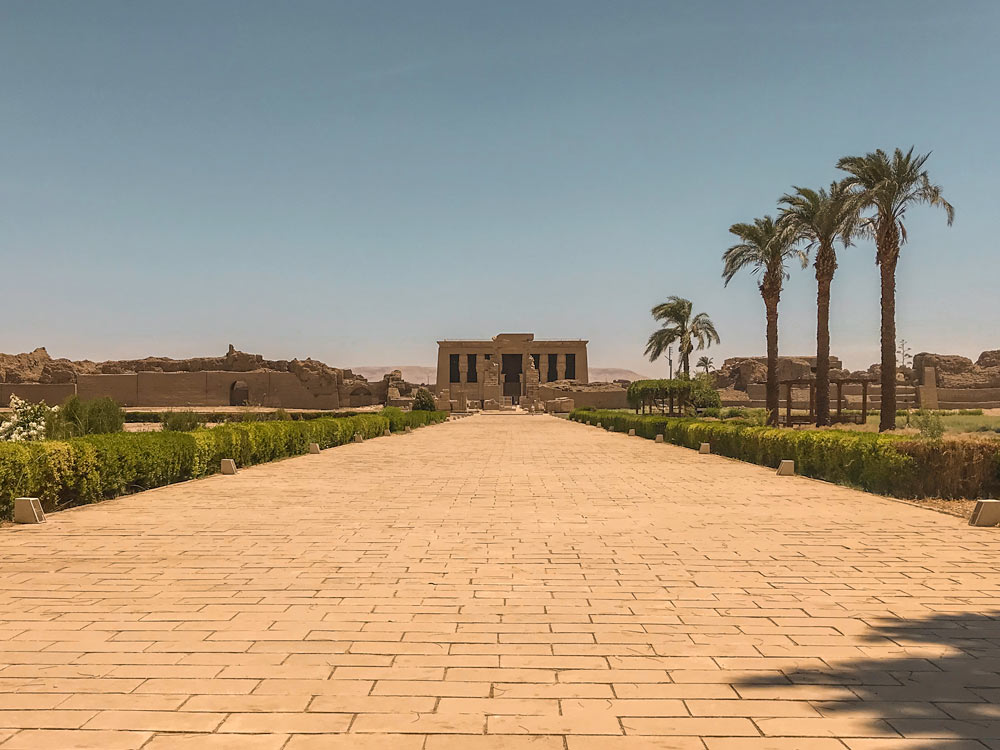
How to get there
The nearest biggest city to Dendera is Qena. You can reach it by plane, bus, or train from north (Cairo – around 5-6 hours by car, 7-8 hours by train), and also from south (Luxor – 1,5 hours by car and train, Aswan – 4-5 hours by car, 5-6 by train). But many people visit Hurghada resorts every year. It will take 3-5 hours by car or bus to Qena.
When you use public transport and reach Qena, take a taxi or local minibus to the temple. For a smoother and more enjoyable journey, consider booking a guided tour that will organize all the details for you.
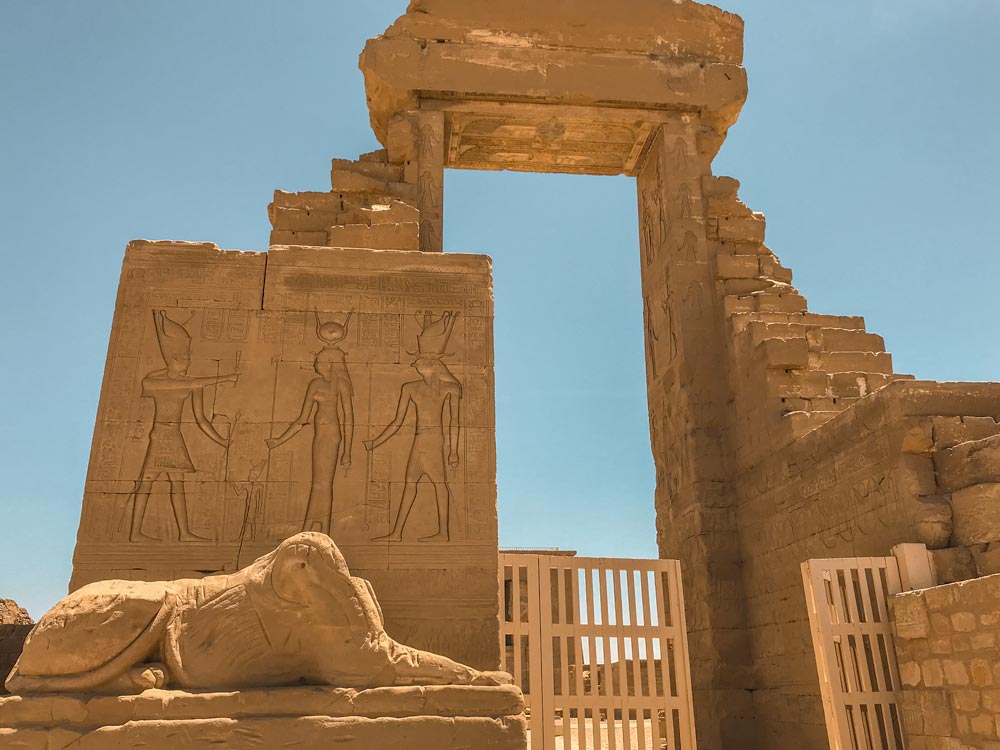
History
The first reference to the temple comes from Herodotus, the Greek historian. According to him, the place is a “magnificent temple,” that has “many statues” and “great court.” Most of the existing structures, including the Temple of Hathor, people constructed during the Ptolemaic period and finalized under the Roman emperors. At times, Christians used it as a church, and some pagan images remain on its walls.
Throughout history, many early European explorers, including Napoleon’s scholars, rediscovered and documented the complex.
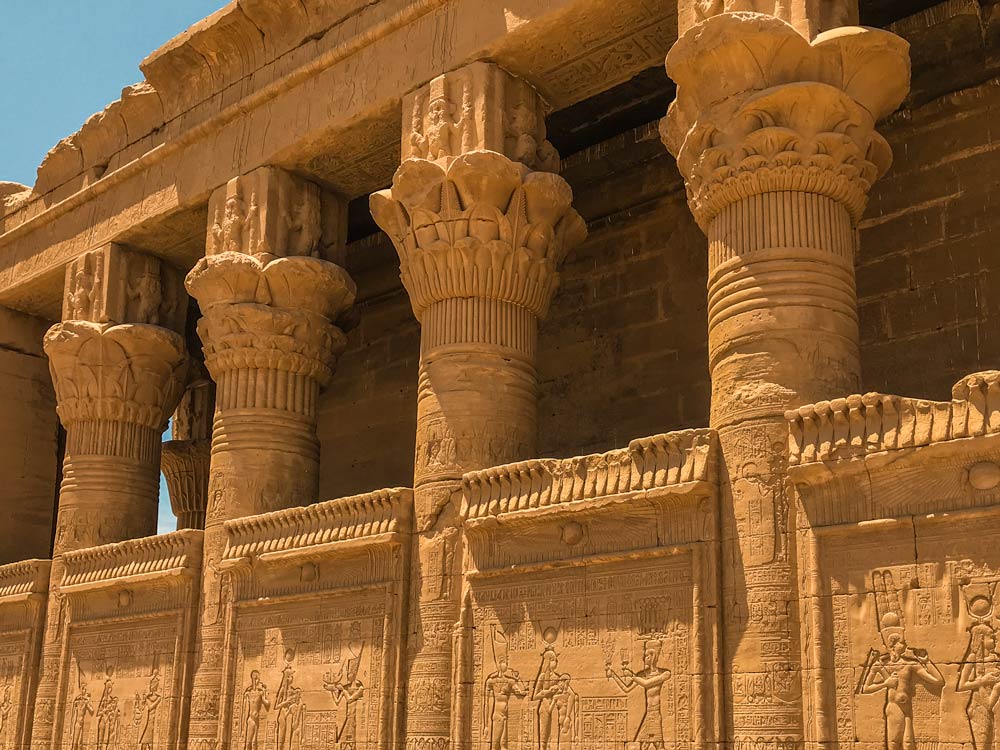
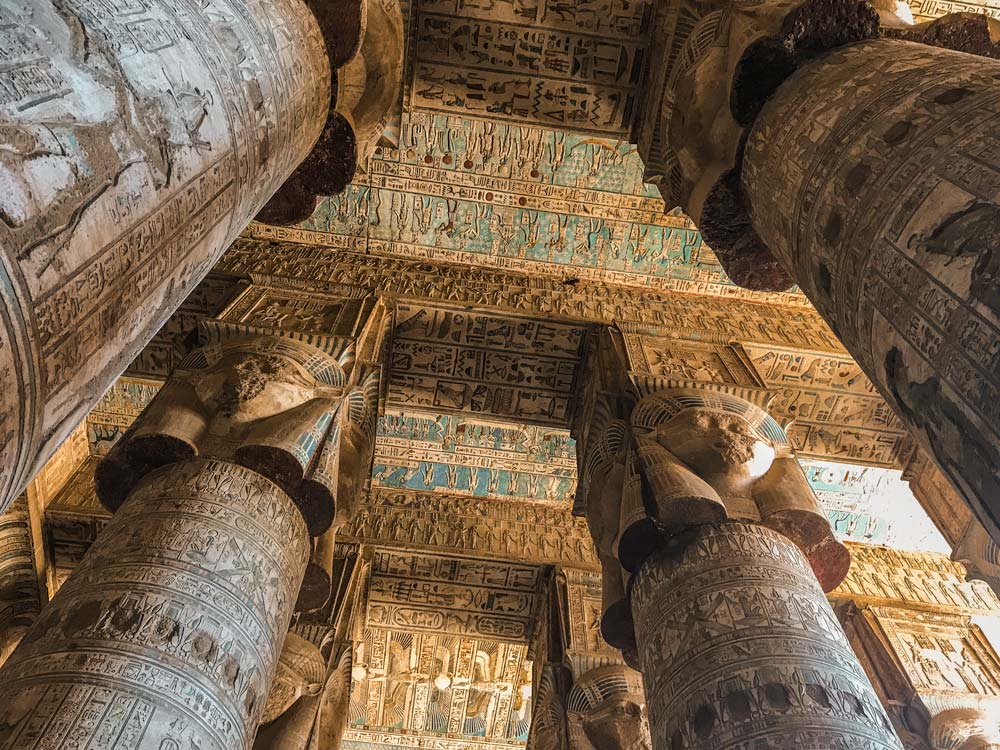
Architecture
A big mudbrick wall surrounds the complex. Sandstone and limestone were the materials people used to construct it.
Dendera Temple Complex is a blend of Egyptian and Greek-Roman styles. You can notice it in the layout, decorative motifs, and sculptural details. When you cross the wall and come near, the massive columns will quickly grab your attention. When you come closer and observe the place from a smaller distance, you will spot that columns, walls, and ceilings are full of detailed reliefs. They usually depict scenes from Egyptian mythology, ceremonies, and rituals.
The temple includes some hidden parts like secret chambers or underground crypts. Many of them people used to store relics or objects.
A sacred lake, surrounded by small chapels, was primarily used for ritual purification.
Unlike other ancient sites, you can access the top and lower rooftops with chapels. Besides panoramic views of the complex, you can adore the chapels that once were used for special rituals. For example, during the Feast of the Beautiful Meeting, Hathor traveled to Edfu to reunite with her child, the sky god Horus.
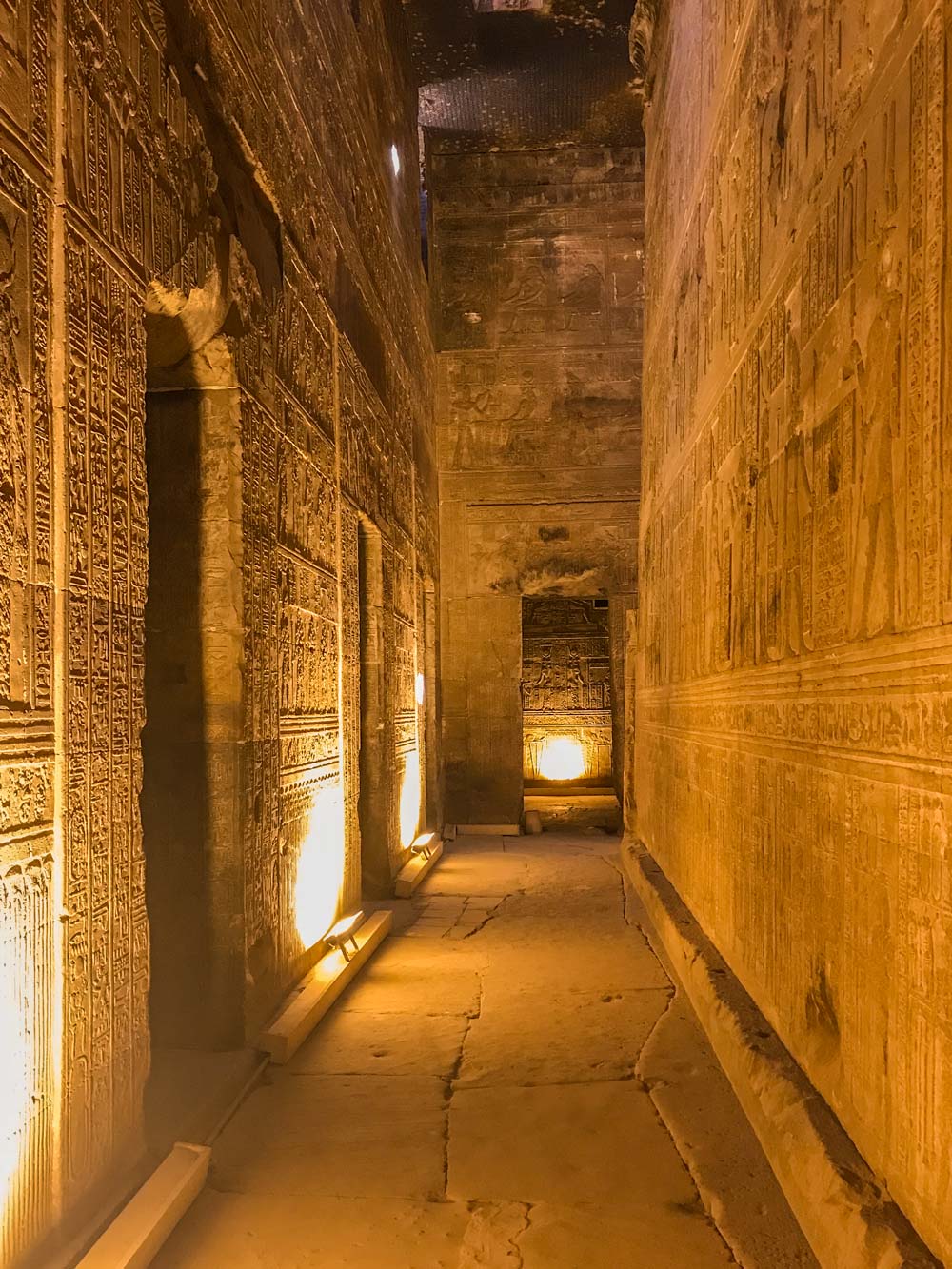
Main features
Hathor Temple
The temple adores Hathor, the goddess of love, beauty, music, fertility, and motherhood. It consists of the Hypostyle Hall, famous for 24 massive columns with Hathor heads on the top. This combination symbolizes Hathor’s protective and nurturing aspect. Reliefs and hieroglyphs cover the walls, ceilings, and columns.
On the outside rear wall is a carving of Cleopatra VII Philopator and her son.
The temple has previously mentioned underground crypts, roof chapels, and sanctuaries dedicated to Osiris.
Dendera Zodiac
The original relief of the Dendera Zodiac is now at the Louvre Museum in Paris. To remove it from the temple ceiling, the team responsible used dynamite to blast the zodiac off the roof, a method that caused significant damage to the original structure. In 2022, Egyptologist Zahi Hawass started a petition to get back the ancient work.
The Dendera Zodiac is a unique bas-relief in a circular form illustrating sky constellations. Some of them are from the Western zodiac. Formerly, the zodiac was on the ceiling of the chapel dedicated to Osiris.
It also had an additional function as a calendar marking astrological and astronomical events. Thanks it, ancient Egyptians could plan their religious festivals and rituals better.
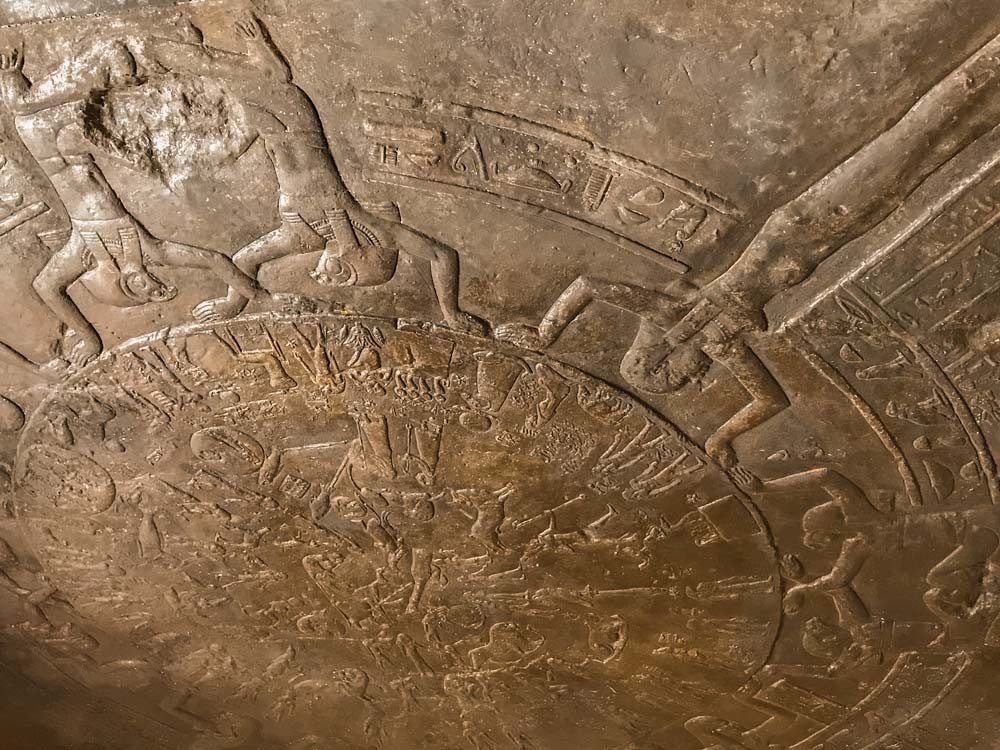
Dendera Light Reliefs
A disputed section of the complex. Some theorists say this particular relief is an ancient light bulb. But mainstream Egyptologists see it as a symbol of mythological creation involving serpents and lotus flowers.
Temple of the Birth of Isis
A small shrine dedicated to the divine birth of the goddess Isis. Some theorists believe she was born in Dendera. The walls are full of reliefs and carvings. Through their visual language, they convey much about her life, birth, marriage to Osiris, and her role as the mother of Horus.
Sacred Lake
There is a large rectangular lake around the temple of the Sacred Lake. The purpose was to use it for purification ceremonies. The temples have several chambers and sanctuaries. Its walls tell the story about the life of Hathor.
The Mammisi
This small structure is located south of the main temple and represents the birth of the god Horus. Its walls depict scenes celebrating the life of Horus, from his birth and childhood to his victorious triumph over the god Set.
23 Crowns of Egypt
The 23 Crowns of Egypt in the Temple of Hathor at Dendera are symbolic representations of royal and divine authority. They feature various crowns. For example, the White Crown of Upper Egypt, the Red Crown of Lower Egypt, and the Double Crown stood for the unification of both lands. These crowns are worn by gods, goddesses, and pharaohs, highlighting their power and divine connection. Intricately carved with details like feathers, sun disks, and protective symbols, they played a crucial role in rituals, representing the pharaoh’s legitimacy, divine protection, and influence over life and the afterlife.
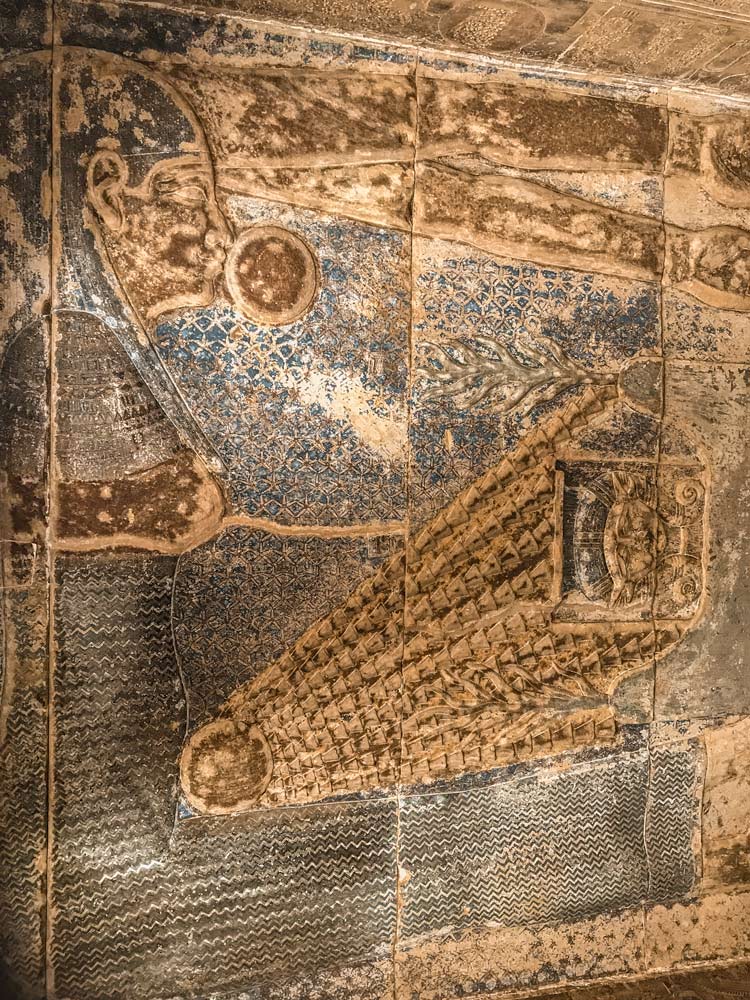
The best time to visit
The best time to visit the Dendera Temple Complex is from October to April when the temperatures are between 20-30 degrees Celsius. Avoid it from May to September when the temperatures are around and above 40 degrees Celsius, making it harder to explore, especially the parts under the direct sun.
What to visit nearby
For many travelers, the city of Qena may be just a quick stop. It offers unique experiences worth exploring, such as visiting the vibrant local souks and the beautiful Al-Qenawi Mosque. If you book a guided tour to Dendera, it might also include a visit to the Temple of Seti I in Abydos, as it did in my case. Located 60 kilometers (37 miles) north of Dendera, this impressive temple is devoted to Osiris, the god of the underworld. It features the famous Abydos King List—a chronological record of ancient Egyptian pharaohs.
70 kilometers south is the well-known Luxor with the Valley of the Kings, Karnak and Luxor Temple.
Between Luxor and Qena is a small town Qift. Once a significant religious center and gateway to the Eastern Desert. It features some remains of three temple groups.
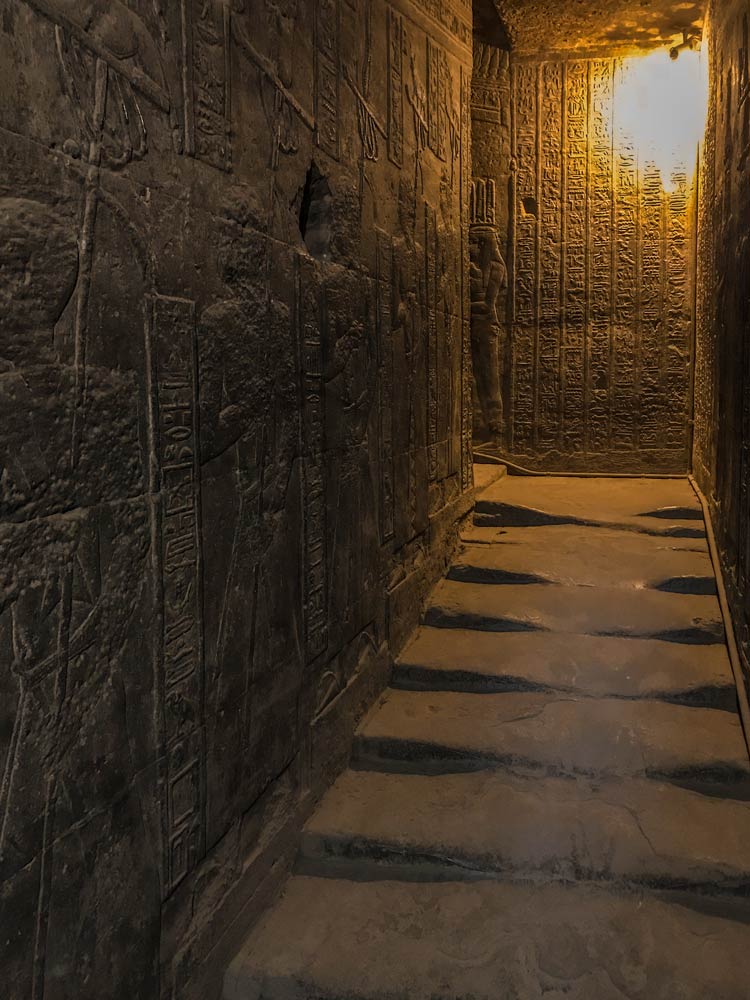
Sources: wiki,
encounterstravel.com
kemetic-independent.awardspace.us
alivoyage.com
marahouseluxor.com